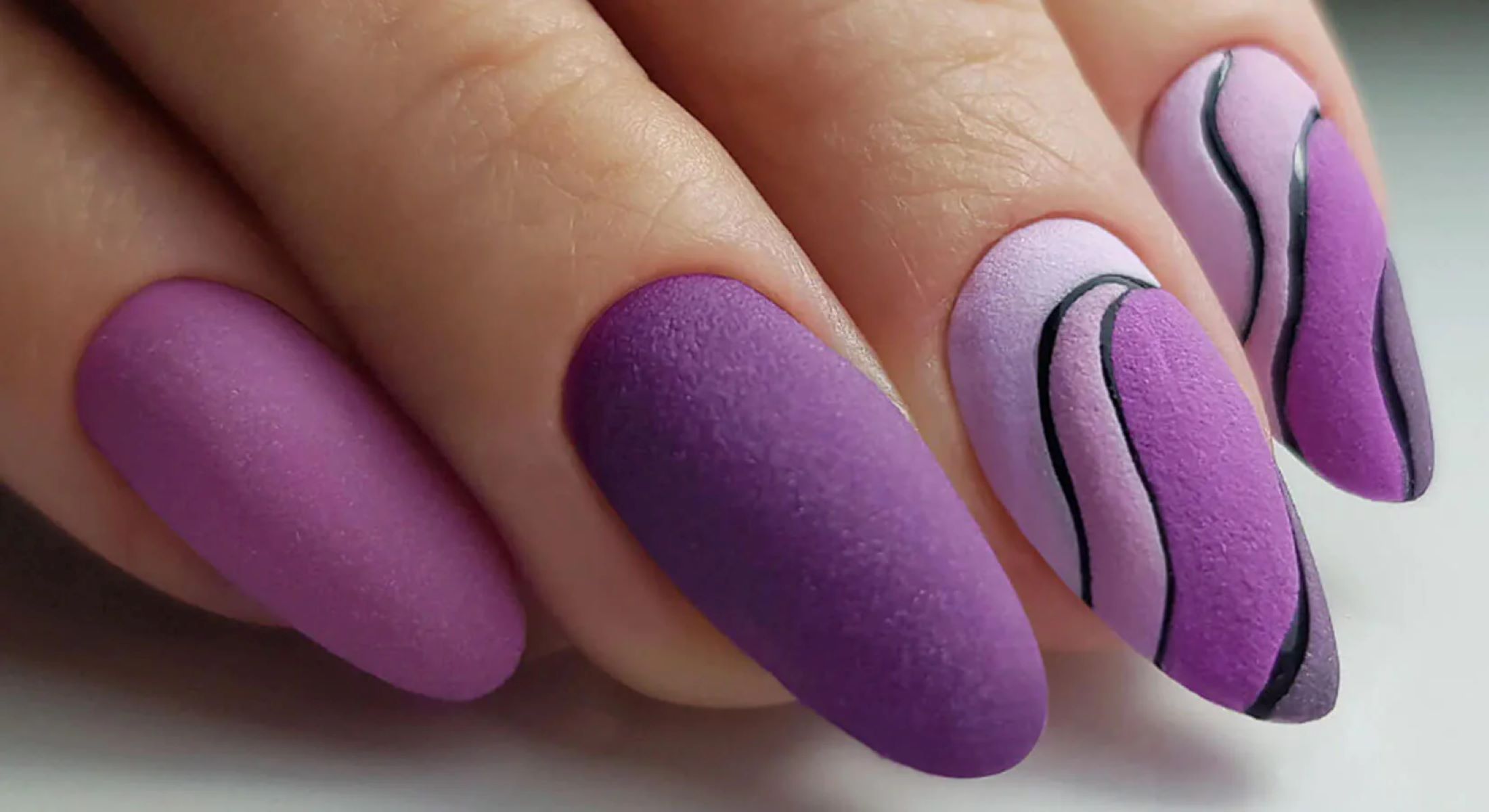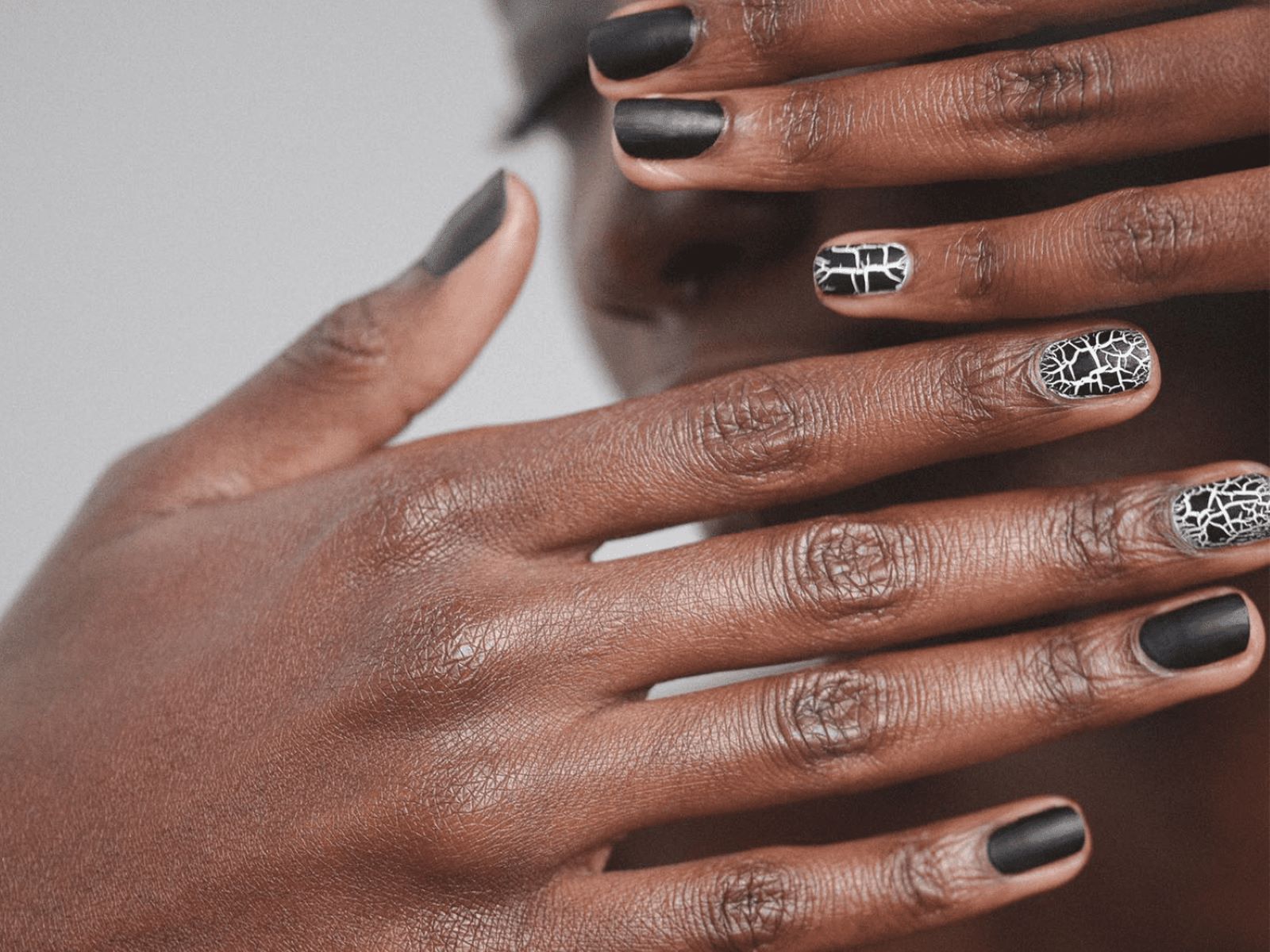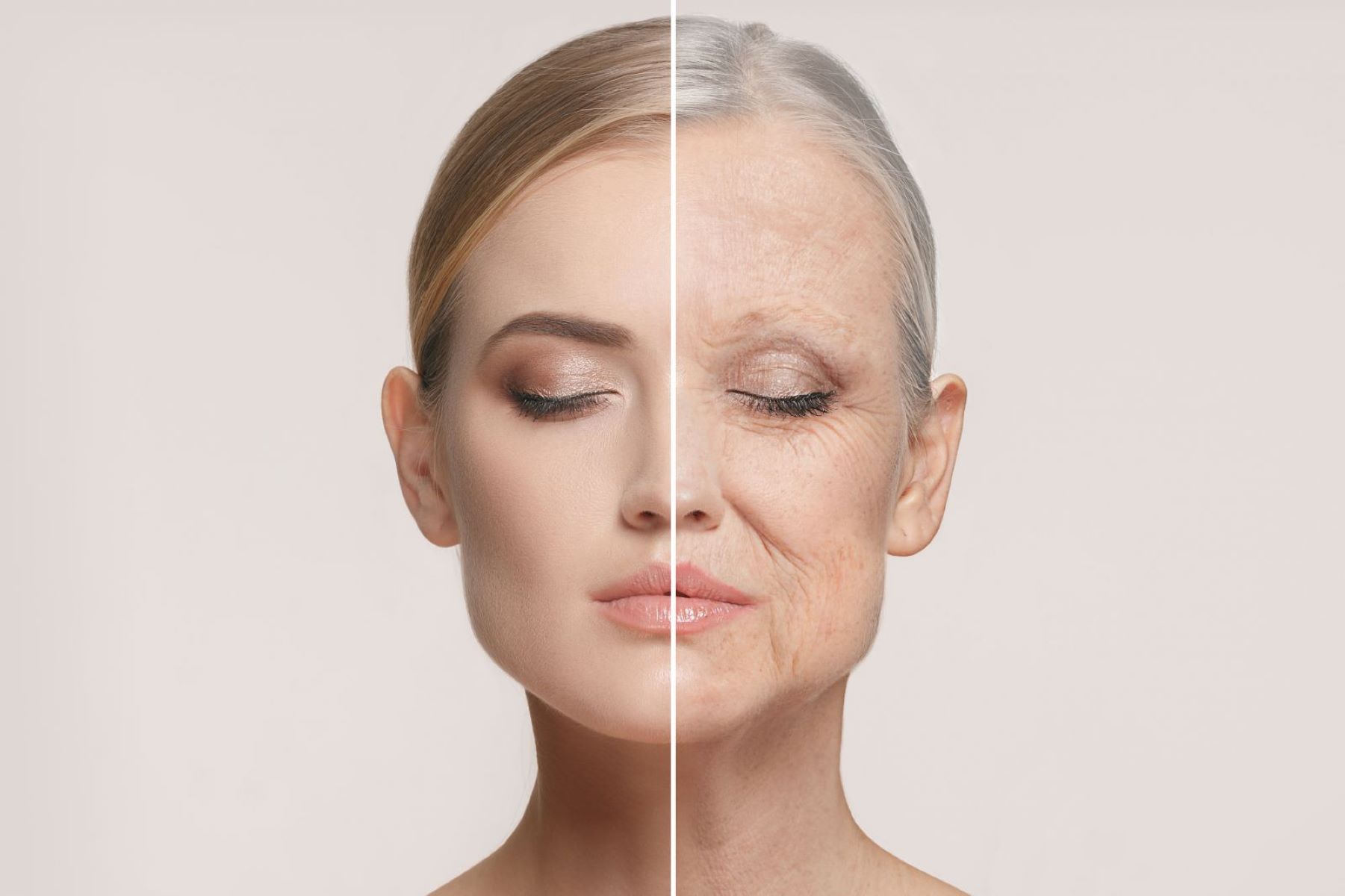Home>Health and Wellness>The Surprising Truth About Acrylic Nails And Your Natural Nails


Health and Wellness
The Surprising Truth About Acrylic Nails And Your Natural Nails
Published: January 28, 2024
Discover the impact of acrylic nails on natural nail health. Learn how to maintain wellness while enjoying beautiful nails. #HealthandWellness
(Many of the links in this article redirect to a specific reviewed product. Your purchase of these products through affiliate links helps to generate commission for Regretless.com, at no extra cost. Learn more)
Table of Contents
Introduction
Acrylic nails have become a popular trend in the realm of beauty and self-expression. For many individuals, the allure of having immaculately manicured nails is irresistible. However, amidst the excitement of embracing this fashion statement, it's crucial to understand the potential impact of acrylic nails on the health and vitality of natural nails.
In a world where personal appearance holds significant value, the appeal of acrylic nails lies in their ability to provide an instant enhancement to one's hands. These artificial nails are crafted from a combination of liquid monomer and powder polymer, resulting in a durable and aesthetically pleasing extension to the natural nail. While the prospect of flaunting flawless nails is undoubtedly enticing, it's essential to delve deeper into the implications of adorning oneself with acrylics.
Beyond the surface-level allure, it's important to recognize that the application and maintenance of acrylic nails can have a profound impact on the health of the natural nails. Understanding the intricate relationship between artificial enhancements and the body's natural state is fundamental in making informed decisions regarding personal grooming practices.
As we embark on a journey to uncover the surprising truths about acrylic nails and their interaction with natural nails, it's imperative to approach this exploration with an open mind and a willingness to prioritize the well-being of our natural nails. By gaining insight into the nuances of this popular beauty trend, we can equip ourselves with the knowledge needed to make conscientious choices that align with our overall health and wellness.
The journey ahead will unravel the intricacies of acrylic nails, shedding light on their application process, impact on natural nails, potential risks, and effective strategies for maintaining the health of our nails while indulging in the allure of acrylics. Let's embark on this enlightening voyage to uncover the surprising truths that lie beneath the captivating veneer of acrylic nails.
What Are Acrylic Nails?
Acrylic nails, a popular choice for nail enhancements, are artificial extensions that are applied over natural nails to create a polished and manicured appearance. These enhancements are crafted using a mixture of liquid monomer and powder polymer, which, when combined, form a malleable substance that can be sculpted into various shapes and lengths. Once applied and hardened, acrylic nails provide individuals with the opportunity to achieve the desired aesthetic for their nails, whether it's a classic, understated look or a bold and dramatic statement.
The appeal of acrylic nails lies in their versatility and durability. They can be customized to suit individual preferences, allowing for a wide array of designs, colors, and finishes. Whether someone desires a simple, natural-looking overlay or an elaborate, embellished style, acrylic nails can be tailored to meet their specific vision.
Furthermore, the robust nature of acrylic nails makes them resilient to daily wear and tear, offering a long-lasting solution for those seeking enduring nail enhancements. This durability is particularly advantageous for individuals who lead active lifestyles or engage in tasks that may subject their nails to frequent impact or strain.
Additionally, acrylic nails can effectively address concerns related to nail imperfections or weaknesses. They serve as a reliable method for concealing or reinforcing natural nails that are prone to breakage or have irregularities, providing individuals with a sense of confidence and satisfaction in the appearance of their nails.
In essence, acrylic nails serve as a versatile and resilient option for individuals seeking to enhance the aesthetic appeal and strength of their natural nails. Their adaptability, durability, and ability to address various nail-related concerns contribute to their widespread popularity in the realm of beauty and self-care.
How Are Acrylic Nails Applied?
The process of applying acrylic nails involves a series of meticulous steps that require skill and precision. Typically, the application is performed by a trained nail technician or a licensed cosmetologist who possesses the expertise to execute the procedure effectively.
-
Preparation: The application commences with the preparation of the natural nails. The technician begins by gently pushing back the cuticles and removing any residual oils or debris from the nail surface. This step is crucial as it ensures that the acrylic adheres securely to the natural nail, promoting longevity and stability.
-
Nail Tip Application: Subsequently, the technician selects appropriately sized nail tips that align with the client's nail bed dimensions. These tips are affixed to the edge of the natural nails using a specialized adhesive, creating the desired length and shape for the acrylic extensions.
-
Acrylic Mixture Preparation: The next stage involves the preparation of the acrylic mixture. The liquid monomer and powder polymer are combined to form a pliable substance that can be molded and sculpted onto the nail surface.
-
Sculpting and Shaping: With adept precision, the technician sculpts the acrylic mixture onto the natural nails and the attached tips, carefully crafting the desired shape and thickness. This step demands finesse and attention to detail to ensure that the acrylic extensions seamlessly blend with the natural nails.
-
Curing and Finishing: Once the acrylic has been meticulously applied and shaped, it undergoes a curing process to harden and solidify. This may involve air-drying or exposure to a UV light source, depending on the specific products used. Following the curing process, the technician refines the nails by filing, buffing, and polishing them to achieve a smooth and lustrous finish.
The culmination of these steps results in the transformation of natural nails into impeccably manicured acrylic extensions, tailored to the client's preferences. The application process exemplifies the intricate artistry and technical proficiency required to create flawless and resilient acrylic nails.
In essence, the application of acrylic nails demands a blend of artistic vision, technical expertise, and meticulous execution to produce stunning and enduring nail enhancements. This process underscores the craftsmanship and dedication that underpin the creation of captivating and resilient acrylic nails.
The Impact of Acrylic Nails on Natural Nails
The allure of acrylic nails often overshadows the potential impact they can have on the health and vitality of natural nails. While acrylic nails offer an instant and striking aesthetic transformation, it's essential to comprehend their influence on the underlying natural nails.
The application of acrylic nails involves the affixing of artificial extensions over the natural nails, altering their external environment and affecting their ability to breathe and receive nourishment. This modification can lead to a range of implications for the natural nails, encompassing both positive and negative aspects.
One notable impact of acrylic nails is the potential weakening of the natural nails. The process of applying and maintaining acrylics can subject the natural nails to prolonged exposure to chemicals and adhesives, which may contribute to a reduction in their strength and resilience over time. Additionally, the mechanical filing and shaping involved in the application process can thin the natural nails, making them more susceptible to breakage and damage.
Furthermore, the presence of acrylic nails can create an environment that fosters the accumulation of moisture and bacteria between the natural and artificial layers. This can lead to the development of fungal or bacterial infections if proper hygiene and maintenance practices are not diligently observed.
On the contrary, acrylic nails can offer protection and reinforcement to natural nails that are prone to breakage or splitting. In some cases, individuals with fragile or brittle nails may find that the application of acrylics provides a safeguarding layer, reducing the likelihood of nail damage and promoting a more resilient nail structure.
It's imperative to recognize that the impact of acrylic nails on natural nails is contingent on various factors, including the application technique, maintenance practices, and individual nail health. By comprehending these dynamics, individuals can make informed decisions regarding the use of acrylic nails and implement strategies to mitigate potential adverse effects on their natural nails.
In essence, the impact of acrylic nails on natural nails encompasses a spectrum of influences, ranging from potential weakening and susceptibility to infections to the provision of reinforcement and protection. Understanding these implications empowers individuals to approach the utilization of acrylic nails with mindfulness and proactive measures to preserve the health and integrity of their natural nails.
Potential Risks and Side Effects
The pursuit of aesthetic enhancement through acrylic nails is not devoid of potential risks and side effects. It is imperative to acknowledge and comprehend these aspects to make informed decisions regarding nail care practices. Understanding the potential implications of acrylic nails on natural nails and overall nail health is crucial for maintaining a balanced approach to beauty and self-care.
One significant risk associated with acrylic nails pertains to the potential for nail damage and weakening. The application and maintenance processes, including the use of strong adhesives and mechanical filing, can compromise the structural integrity of natural nails over time. This can result in increased susceptibility to breakage, thinning, and brittleness, leading to concerns about the long-term health of the nails.
Moreover, the prolonged wear of acrylic nails can create an environment conducive to the development of fungal or bacterial infections. The presence of moisture and debris between the natural and artificial layers can provide a breeding ground for pathogens, posing a risk to overall nail hygiene and health. Without diligent maintenance and hygiene practices, individuals may be vulnerable to these detrimental consequences.
In addition, allergic reactions to the components of acrylic nails, such as the liquid monomer or other chemical substances, represent a notable side effect that individuals should be mindful of. Sensitivity or allergic responses can manifest as redness, swelling, itching, or irritation around the nail area, necessitating prompt attention and potential discontinuation of acrylic nail usage.
Furthermore, the removal process of acrylic nails, if not executed with care and expertise, can pose risks to the natural nails. Improper or forceful removal techniques can cause trauma to the nail bed, resulting in pain, discomfort, and potential damage to the underlying nail structure.
It is essential for individuals considering or currently utilizing acrylic nails to be vigilant about these potential risks and side effects. By staying informed and proactive, individuals can adopt measures to mitigate these concerns, such as seeking professional application and removal services, prioritizing nail hygiene, and allowing periodic breaks from acrylic nail usage to facilitate natural nail recovery and rejuvenation.
In essence, while acrylic nails offer a myriad of aesthetic benefits, it is crucial to recognize and address the potential risks and side effects associated with their usage. By embracing a conscientious and informed approach, individuals can navigate the realm of nail enhancements with a focus on preserving the health and resilience of their natural nails.
Tips for Maintaining Healthy Natural Nails with Acrylics
Maintaining the health and vitality of natural nails while adorning acrylics is essential for individuals seeking to strike a harmonious balance between aesthetic enhancement and nail well-being. By integrating mindful practices and proactive measures, individuals can optimize the care of their natural nails, promoting resilience and health even in the presence of acrylic enhancements.
-
Hygiene and Maintenance: Diligent hygiene practices are paramount for safeguarding the health of natural nails while wearing acrylics. Regularly clean and dry the nail area, ensuring that moisture and debris do not accumulate between the natural and artificial layers. Additionally, scheduled maintenance appointments with a qualified nail technician can aid in monitoring the condition of both the acrylic and natural nails, allowing for timely adjustments and addressing any emerging concerns.
-
Nourishment and Moisture: Despite the presence of acrylic nails, it is crucial to prioritize the nourishment and hydration of natural nails. Utilize nourishing cuticle oils and moisturizers to promote the health and flexibility of the nail bed and surrounding skin. This proactive approach can mitigate the potential drying effects of acrylics and contribute to the overall well-being of the natural nails.
-
Avoiding DIY Removal: When it comes time to remove acrylic nails, seek professional assistance to ensure a safe and gentle removal process. Avoid the temptation to undertake do-it-yourself removal methods, as improper techniques can lead to damage and trauma to the natural nails. By entrusting the removal process to a skilled professional, individuals can safeguard the integrity of their natural nails.
-
Periodic Breaks: Implementing periodic breaks from wearing acrylic nails can provide an opportunity for the natural nails to recuperate and regenerate. Allowing the nails to breathe and rejuvenate can help counteract the potential weakening effects of prolonged acrylic usage, fostering the restoration of natural nail strength and resilience.
-
Communication with Nail Technicians: Maintain open communication with nail technicians regarding any concerns or preferences related to the application and maintenance of acrylic nails. Clear and transparent dialogue can facilitate the customization of nail care approaches to align with individual needs and promote the health of natural nails.
By integrating these tips into their nail care regimen, individuals can navigate the realm of acrylic nails while prioritizing the well-being of their natural nails. This proactive and holistic approach enables individuals to enjoy the aesthetic benefits of acrylic enhancements while nurturing the health and strength of their natural nails.
Conclusion
The journey of exploring the surprising truths about acrylic nails and their interaction with natural nails has unveiled a multifaceted landscape of beauty, resilience, and potential considerations. As we conclude this enlightening voyage, it is evident that acrylic nails, while offering a canvas for artistic expression and nail enhancement, necessitate a nuanced approach that prioritizes the health and vitality of natural nails.
The allure of acrylic nails lies in their ability to provide individuals with a versatile and enduring solution for achieving impeccably manicured nails. Their durability, customization options, and capacity to address nail imperfections have solidified their status as a popular choice in the realm of beauty and self-care. However, beneath the captivating veneer of acrylics lie considerations that warrant mindful attention and informed decision-making.
The impact of acrylic nails on natural nails encompasses a spectrum of influences, ranging from potential weakening and susceptibility to infections to the provision of reinforcement and protection. Understanding these implications empowers individuals to approach the utilization of acrylic nails with mindfulness and proactive measures to preserve the health and integrity of their natural nails.
Furthermore, the potential risks and side effects associated with acrylic nails underscore the importance of staying informed and proactive. By acknowledging these aspects and implementing measures such as diligent hygiene practices, nourishment, professional removal, and periodic breaks, individuals can navigate the realm of acrylic nails with a focus on preserving the health and resilience of their natural nails.
In essence, the coexistence of acrylic nails and natural nails calls for a harmonious balance that celebrates aesthetic enhancement while safeguarding the innate vitality of the nails. By integrating mindful practices, proactive measures, and informed decision-making, individuals can embark on a journey of nail care that harmonizes beauty and well-being.
As we bid adieu to this exploration, let us carry forth the insights gained, embracing a holistic approach to nail care that honors both the allure of acrylic nails and the intrinsic resilience of natural nails. May this newfound understanding serve as a compass, guiding individuals towards a path of conscientious and balanced nail care, where beauty and health converge in harmonious unity.














